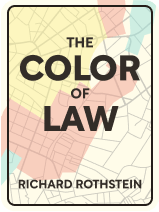

This article is an excerpt from the Shortform book guide to "The Color of Law" by Richard Rothstein. Shortform has the world's best summaries and analyses of books you should be reading.
Like this article? Sign up for a free trial here .
When was the start of residential segregation in the United States? Who played the leading role in creating a segregated America?
It started with a landmark, unconstitutional Supreme Court decision in 1883 that refused to equate housing discrimination with slavery. This kickstarted the period between 1883 and 1963 when residential segregation in the United States became prevalent. The government at all levels contributed to this issue.
Read more about the history of residential segregation in the United States.
The Early Roots of Racial Segregation
As noted in the introduction, residential segregation in the United States is unconstitutional: It infringes the Fifth, Thirteenth, and Fourteenth Amendments to the US Constitution. It was also outlawed by the 1866 Civil Rights Act, which prohibited any law that echoed the characteristics of slavery by disadvantaging African Americans.
Unfortunately, in 1883, the Supreme Court determined that housing discrimination didn’t represent a continuation of the “badges and incidents of slavery.” It wasn’t until 1968—when the Supreme Court overturned the 1883 decision and, separately, Congress passed the Fair Housing Act—that racial discrimination in housing was unambiguously prohibited.
Between 1883 and 1968, African Americans were systematically and repeatedly disadvantaged in the housing market due to government policy—specifically through the Federal Housing Administration and the Veterans Administration—with repercussions that entrenched residential segregation in the United States today.
For example, the primary source of wealth for American families is their home. Because of racial segregation in the United States, black Americans were unable to obtain financing, from either the government or private banks, to purchase homes in the middle of the last century, their descendants haven’t inherited the same wealth that white Americans have.
These descendants are also unable to file suit for remuneration on account of this historical discrimination. Because the Supreme Court ruled housing discrimination legal between 1883 and 1968, descendants of those discriminated against have no legal standing to sue.
The Role of the Government in Creating Residential Segregation in America
Widely reviewed and discussed when it was published in 2017, Richard Rothstein’s The Color of Law makes the case that racial residential segregation in the United States—the fact that African Americans largely live in discrete areas separate from white Americans—is the result of explicit government policy (“de jure” segregation) rather than personal preferences or random processes (“de facto” segregation). That is, historically, African Americans didn’t choose to live almost exclusively among themselves; rather, they were compelled to do so by an array of discriminatory policies designed and implemented by government at the federal, state, and local levels to create a segregated America.
The distinction between de jure and de facto segregation is key. This is because segregation “by law” is unconstitutional and so remediable by legislation and litigation, whereas the Supreme Court has ruled that segregation “by personal choice” isn’t rectifiable under the Constitution.
Rothstein proves his claim that racial residential segregation in the United States was government-sponsored by examining the various means public officials used to promote segregation. Each chapter in the following summary focuses on one of these means, from the segregation of public housing to the exclusion of African Americans from federal home loans to the continual disadvantagement of African Americans in the labor market.
To emphasize the individual strategies government employed to create a segregated America, Shortform has had to omit some of the many examples Rothstein includes of racial residential segregation. (Those familiar with the book will also notice that we’ve redistributed the material that appears in the book’s first chapter and combined some shorter chapters.) As always, if you enjoy the summary and are curious to know more, we encourage you to consult the author’s work itself.

———End of Preview———
Like what you just read? Read the rest of the world's best book summary and analysis of Richard Rothstein's "The Color of Law" at Shortform .
Here's what you'll find in our full The Color of Law summary :
- How racial residential segregation is the result of explicit government policy
- The three reasons why racial segregation is so difficult to reverse
- The steps that could lead to a more integrated and equitable society






